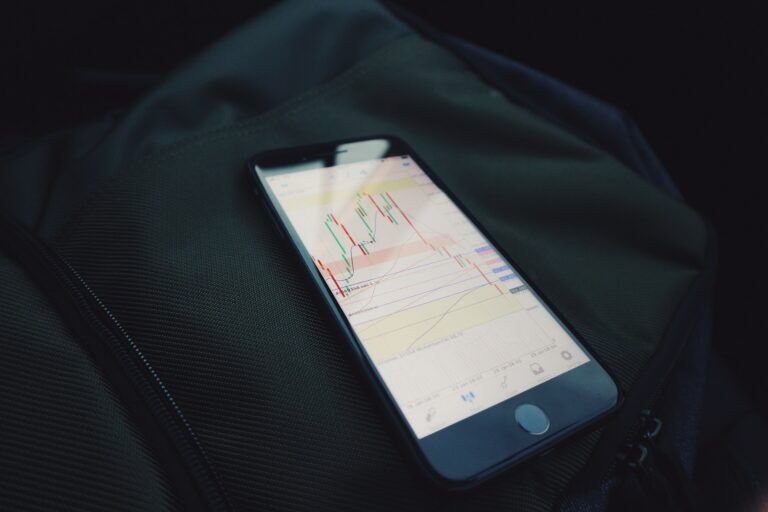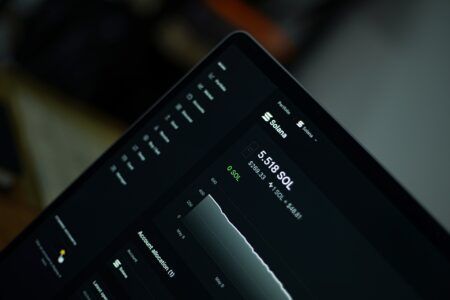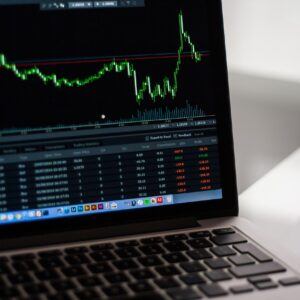Anyone reading this article will likely already be a fan of trading cryptoassets, and therefore will know that it is risky. Besides hacks, scams, and losing funds by entering incorrect addresses for tokens, crypto prices are still extremely volatile as the asset class establishes itself.
Trading on margin amplifies this volatility. The rewards can be massive for experienced traders, enough to generate real wealth. But margin trading can be punishing for inexperienced traders who are out of their league, especially when trading with high leverage.
The exchanges offering this leveraged trading must offer large amounts of liquidity without actually having it. This means not only providing the liquidity to trade in the first place, but also accelerating the profit and loss of the trader.
The leveraged nature of derivatives means that there is a counterparty risk to contract participants – whoever is exposed to losses might simply walk away from the deal. To prevent this, whoever wants to trade with derivatives has to put ‘margin’ on the table – normally a fraction of the value of its represented underlying asset – as an act of good ‘faith’ to the counterparty that each side will honor the terms specified in the contract.
But this creates another problem – what happens if the ‘margin’ posted isn’t enough to cover the losses incurred by the losing trader? This risk is even higher when the underlying asset is so volatile, as is the case with cryptocurrency.
In legacy finance, the problem was solved by creating different layers of market participants. Each layer is required to deposit additional capital into the system – so as to act as a ring fence against the situation of a margin ‘shortfall’ when the market is volatile.
For example, if you are trading CME futures, you post margin to your broker, and your broker posts margin to the clearing broker, and the clearing broker posts capital (or margin) to the clearing house or to the exchange. So if your margin is insufficient to cover your loss and you default, your broker would have to pay for it as required by the clearing broker.
The idea behind such a design is to prevent a cascade collapse of the entire market – triggered by some huge irresponsible trades or one poorly-managed broker. The mechanism has proved robust and solid so far, but the only drawback is that the implied cost to society and the market as a whole is high. Regulators have to monitor very closely the risk of exposure of each market participant and must demand additional capital in case the market is volatile. It also inhibits free competition, as operating a broker and clearing house is very capital-intensive – it is simply not possible for small-time traders. Thus the market gradually falls into the trap of ‘too-big-to-fail’, as in the banking sector.
If we envision a leveraged exchange operating in a decentralized manner, or more specifically, peer-to-peer transactions without the centralized components of the legacy market, we need a complete redesign of how the market is structured so as to manage the default risk of contract holders, while at the same time ringfencing the systematic risk of the market as a whole from large-scale risk events.
The Approach of Crypto Derivatives Exchanges
The two biggest crypto derivatives exchanges in the world, Bitmex and OKEx, adopt an innovative mechanism to handle defaults – a mechanism OKEx call “Societal Clawback” and named “Auto-deleveraging” by Bitmex. In this article we don’t go into the pros and cons of each mechanism, but it’s noteworthy that they both share a similar methodology – profit is taken from the winning side according to the margin call loss of the losing side.
The drawback of such a “clawback” mechanism is that traders have to take into account the probability of failing to get 100% of expected profits due to traders losing too much on the platform. The benefit however as a trader is that you don’t
need to worry about the equity balance going negative – unlike in the traditional market – due to the existence of the clawback mechanism.
One more benefit of clawback is that traders don’t need to take into account (or price-in) the risk of solvency of the platform. In contrast, in the traditional futures market it is crucial to keep monitoring the financial strength and liquidity level of each clearing member. Stress-tests are required to simulate various market scenarios as an input to compute the required capital level of each market participant.
On OKEx or Bitmex, you don’t need to ask the platform to disclose the balance sheet on a daily basis, due to the clawback mechanism that acts as a last line of defense if there is a large scale systemic event.
In essence, all profitable traders on OKEx and Bitmex are paying an ‘implied’ insurance premium for underwriting the systemic risk of the platform.
The Conundrum of Avoiding Clawbacks
So we know that the clawback mechanism is the bottom-line and ultimately unfavorable to traders – especially for those who are running an arb-type strategy. The challenge for exchanges then became how to prevent any clawback events.
To address this, both Bitmex and OKEx implemented an ‘insurance’ fund – with the size of the pool publicly visible. The idea of the insurance fund is to pay the amount of a default value on a margin call before a clawback event is triggered. So the bigger the insurance fund, the less likely the clawback is to occur.
The hazard of having a small insurance fund, of course, is the risk of not having enough cash on hand to cover a losing position (i.e., to pay out to the winning counterparty), after extreme price movements cause mass liquidations.
The bigger the insurance fund, the better it is for traders. But the conundrum lies in how exchanges grow their insurance fund.
The money in an insurance fund is ‘charged’ from the residual balance after a position is force liquidated on the market. Therefore the more that positions are being liquidated as early as possible, the faster the “pool” size grows. Some other derivatives exchanges arbitrarily raise the maintenance margin occasionally so as to liquidate positions earlier – thus pouring more money into the insurance fund. This particularly disadvantages smaller traders as they are normally the group of traders who have less equity and poorer risk management.

For this reason, a delicate balance must be struck between the growth rate of the insurance fund, and avoiding liquidating positions too early – so as to protect the interests of retail traders.
This is where OKEx’s innovation comes in.
OKEx’s New System
OKEx have designed a system generally similar to BitMEX’s winning formula of liquidating losing positions (which translates to limited downside risk – there are no margin calls in such a system), but with a few key differences that they deem to be superior.
In a nutshell, OKEx’s new system allows them to liquidate users closer to their bankruptcy price. This means that users’ positions will have more opportunity to remain solvent and recover, rather than being liquidated. It also means that users will continue to enjoy the ability to trade highly leveraged positions.
The new regime is also designed to prevent, as far as possible, the possibility of a clawback ever being necessary again (it has happened once on OKEx, in mid 2018).
In their own words, OKEx are “[focusing] on improving and optimizing our liquidation engine instead of growing our insurance fund rapidly,” which would be accomplished by raising the maintenance margin requirement and liquidating positions earlier.
A couple of innovations to the trading engine allow this more efficient method of funding.
The first is the development of OKEx’s “entrusted price” – an alternative to the bankruptcy price. This is a “smarter” price metric than bankruptcy price, because instead of dumping a liquidated position onto the market at the current price, the entrusted price is found “based on current market depth, basis, bankruptcy price, and index price to increase transaction efficiency and return to cover the loss.”
Without such a system, in the case for example, of a liquidated short position, if the exchange immediately forced the liquidated trader to buy back all the bitcoin at the exact market price, this could cause a significant and sudden surge in the market price on the exchange – which is to be avoided.
The second is a dynamic ordering system, that will actively manage a liquidated position’s resale on the market. This means that the position will be removed from the order books and replaced at a different price, if it is not being bought. Again, this constant re-appraisal will be “based on the latest market depth, basis, bankruptcy price, and index price.”
Margin Trading Improving
The field of margin trading in crypto is opening up. Whereas it was once dominated by the BitMEX exchange, new challengers for this market share are emerging all the time: both OKEx and BitFlyer have recently traded more than double the derivatives volume of BitMEX.
A competitive atmosphere like this can only be a good thing. More innovative order matching and liquidation engines will mean more leeway for traders in their positions.
Such improvements mean traders will be less likely to be liquidated when a trade goes against them, and a better chance of the position’s recovery. It also means users are less likely to be subjected to another clawback, which only happens what an exchange’s methods have really gone wrong somewhere.
This progress indicates a maturing industry, and better exchange engineering and rates are good news for all of us. These innovations and best practices will hopefully spell a strong and dynamic future for this emerging asset class.









